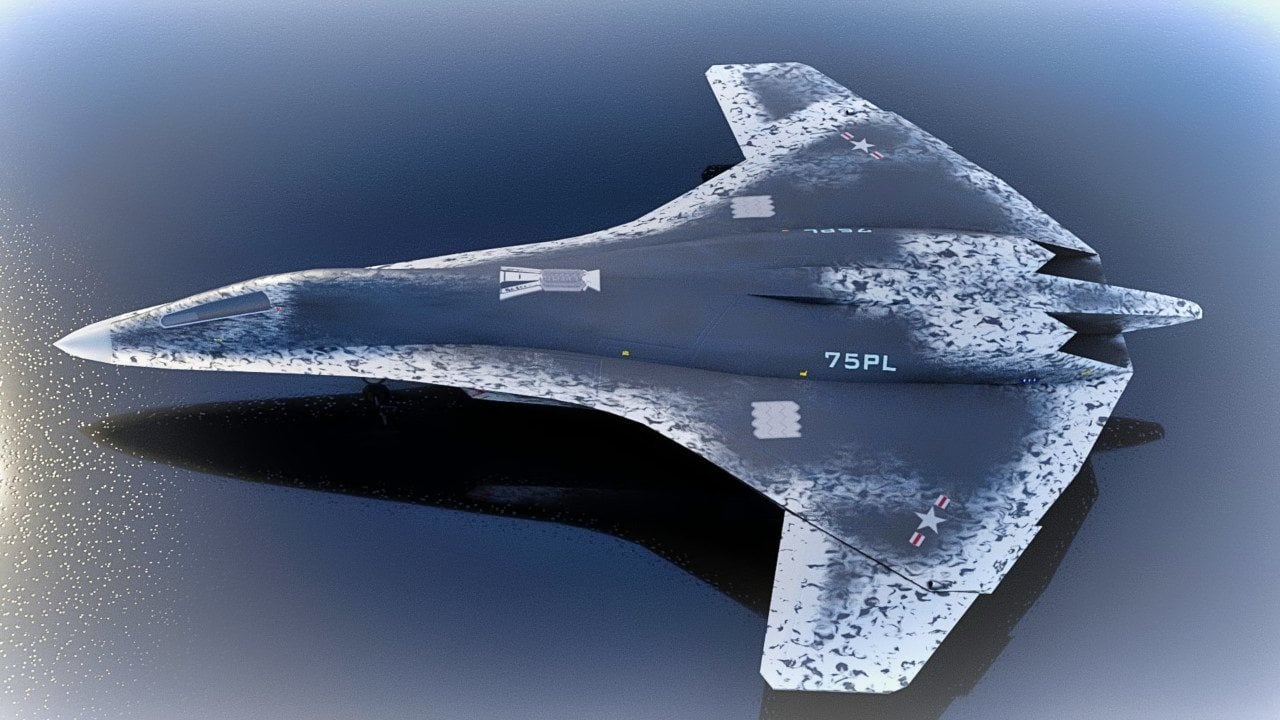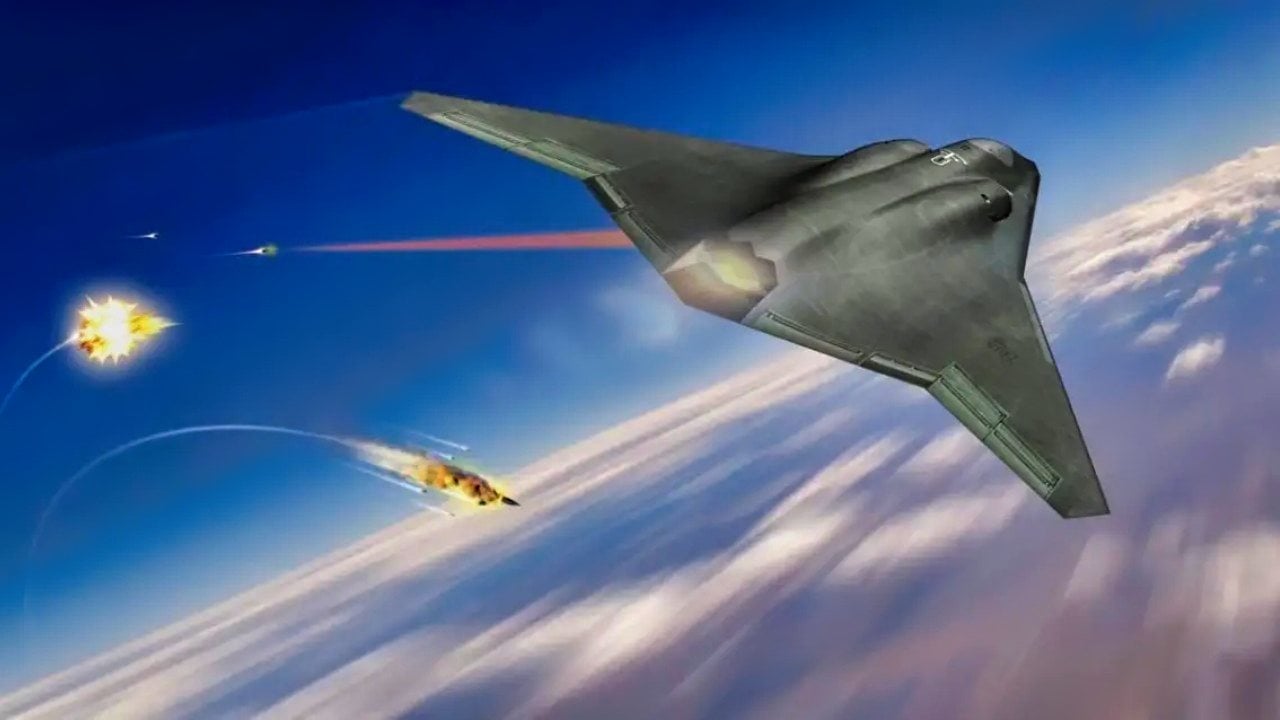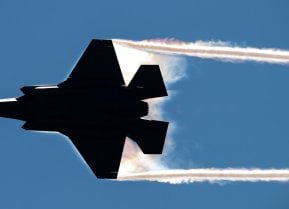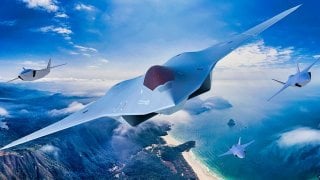NGAD: The Air Force's New 6th Generation Fighter Is a Big Question Mark
The U.S. Air Force's Next Generation Air Dominance (NGAD) program is evolving but remains a critical focus. Despite suggestions that the Collaborative Combat Aircraft (CCA) would be disposable and short-term, the Air Force is committed to NGAD, aiming to develop a sixth-generation fighter to replace the F-22 Raptor.
Summary and Key Points: The U.S. Air Force's Next Generation Air Dominance (NGAD) program is evolving but remains a critical focus. Despite suggestions that the Collaborative Combat Aircraft (CCA) would be disposable and short-term, the Air Force is committed to NGAD, aiming to develop a sixth-generation fighter to replace the F-22 Raptor.

-High costs, particularly for adaptive engines, pose a challenge, potentially limiting fleet size or necessitating trade-offs.
-Boeing, competing with Lockheed Martin for the NGAD contract, faces high stakes as its future in military fixed-wing aircraft production depends on winning this contract.
NGAD Program Faces Financial Hurdles: Future of Sixth-Generation Fighter Uncertain
The rumors of the death of the United States Air Force's Next Generation Air Dominance (NGAD) program may have been slightly exaggerated. Last month, it may have certainly sounded like the air service had soured on the program to develop a sixth-generation manned fighter, which would be supported by a system of systems – including unmanned loyal wingmen.
At the Air & Space Forces Association event on June 13, Air Force Chief of Staff Gen. David Allvin suggested the Collaborative Combat Aircraft (CCA) – which calls to develop, test, and implement new autonomous aircraft that could support a future manned fighter – would be low-cost, and certainly wouldn't be the type of platform that could see decades of service.
"Built to last' is a tremendous 20th-century bumper sticker, but the assumption was: whatever you had was relevant as long as it lasted," Allvin explained. "I'm not sure that's relevant anymore. So that's why we aren't building in a sustainment structure. Ten years after this, I'm hoping the technology will make it so that CCA won't be as relevant, but it might be adaptable, and that's what we're building into modularity and adaptability."
Despite the suggestion that the CCA would be more disposable or short-term aircraft, the U.S. Air Force is reportedly committed to NGAD, yet, the six-generation fighter may also be evolving. The days of fighters that remain in service for decades – like the F-15 Eagle and F-16 Fighting Falcon – may be coming to an end.
Department of the Air Force Secretary Frank Kendall told Defense News that the NGAD could result in the development of a far less complex aircraft engine, in part to keep the cost down.
"The family of systems concept of Next Generation Air Dominance is alive and well," Kendall said in his interview. "I can tell you that we are looking at the NGAD platform design concept to see if it's the right concept or not. … We're looking at whether we can do something that's less expensive and do some trade-offs there."
A key component of the NGAD effort has been its adaptive engines, which would reportedly be able to switch to more efficient configurations based on the flying conditions. However, the cost of the system has been seen as a serious hurdle that the air service needs to clear as it seeks to develop the eventual replacement for the Lockheed Martin F-22 Raptor air superiority fighter.
It was previously reported that the NGAD could cost as much as three times that of the F-35 Joint Strike Fighter, with each NGAD manned fighter having a price tag that reaches the stratosphere, roughly around $300 million apiece. As Defense News further reported, that would greatly limit the size of the fleet.
Kendall admitted that the Air Force can only afford it in small numbers. And while the manned fighters would be supported by the significantly lower cost CCA, it may be necessary to bring down the costs of the sixth-generation fighter. And that could mean sacrificing some of the features of the adaptive engine.
The Air Force could find itself having to choose between a lower-cost aircraft with fewer capabilities, or adopting a highly capable aircraft but then only being able to acquire a limited number.
Boeing May be Betting Big on the NGAD
It isn't just the U.S. Air Force that could be a loser if the NGAD program crashes and burns from its high cost. Aerospace giant Boeing remains one of the two companies – along with Lockheed Martin – to be competing for the lucrative contract to produce the sixth-generation fighter.
Lockheed Martin is currently the world's largest military aircraft manufacturer and the prime contractor on the largest defense contract ever with the F-35. It also continues to produce the F-16 Fighting Falcon for foreign military sales and those two aircraft could ensure the company's assembly lines run smoothly for years and years to come.
By contrast, Boeing has simply had a rough year due to ongoing problems with its 737 MAX troubles. The company desperately needs a win, especially as its contracts to produce the F-15EX Eagle II and F/A-18E/F Super Hornet are only scheduled through the end of the decade. If Boeing can't find foreign buyers for the F-15EX, it could find itself all but out of the military fixed-wing business in the 2030s.

Boeing needs the NGAD contract, and the Air Force needs the NGAD. The question is whether Boeing will be able to deliver a winning design, and then whether the Air Force will have the money to build the actual aircraft with the capabilities for the 2030s and beyond.
Author Experience and Expertise: Peter Suciu
Peter Suciu is a Michigan-based writer. He has contributed to more than four dozen magazines, newspapers, and websites with over 3,200 published pieces over a twenty-year career in journalism. He regularly writes about military hardware, firearms history, cybersecurity, politics, and international affairs. Peter is also a Contributing Writer for Forbes and Clearance Jobs. You can follow him on Twitter: @PeterSuciu. You can email the author: [email protected].


